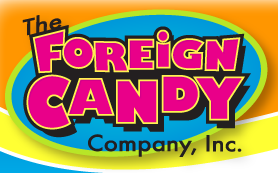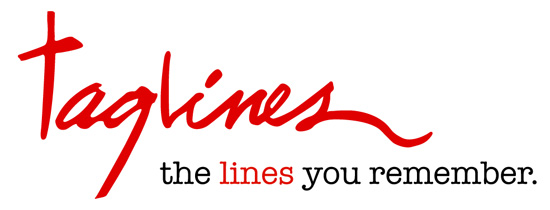Candy Brands: The Foreign Candy Company

......................................................................................................................................................................
From the creators of Rips Licorice, Eiffel Bon Bons, Big Fat Hissee Fit, and many more, I present to you… The Foreign Candy Company, Inc. This brand thrives on delivering fun, flavorful, and unique candies that are loved by both kids and adults.
The story behind this brand is one that began in 1976 when Peter W. De Yager stumbled onto an overnight success. Yager, who was a high school German teacher at the time this adventure began, started taking his students on trips abroad. After one trip to a gummy bear factory in Germany, the students decided to sell their candy as a fundraiser to raise money for the next year’s trip. It turns out that selling foreign candy was a huge success, so Yager decided to begin selling the candy across the country.Read more
For the Love of Words ...

......................................................................................................................................................................
Here at Addison Whitney, the Verbal Branding Department is geared up and ready for National Dictionary Day celebrated on October 16th, 2009! This day in history has been dubbed Dictionary Day in honor of the birthday of Noah Webster, Father of the Dictionary.
How do you plan on spending this National Holiday? Here are a few suggestions: Play a game of Scrabble, Make a list of all your favorite words, Complete a crossword puzzle, or Eat a bowl of alphabet soup. Whatever is it you choose to do, at least take a moment to pause and think what a different place our world would be without words and the meanings we have attached to them ...
Contributed by: Carrie Friedrich
"Nattyisms"

......................................................................................................................................................................
Coining new words and phrases as a branding strategy seems to be rising in popularity among today’s advertising campaigns. Natural Light, who primarily focuses on a target audience of drinkers aged 21 – 35, has created an entire advertising campaign focused on coined words and humor to give their brand a fresh new edge. During recent times, beer drinkers have been shifting towards cheaper beers. In accordance with this shift, Natural Light Beer, a division of Anheuser-Busch, has revealed its first television advertising campaign in Read more
Optimism Pays Off?
......................................................................................................................................................................
If you’re a soft drink company what do you do to keep market share high in a down economy? Let the good times roll, and put on a happy face? Well, I’m not sure, but that certainly seems like the plan for mega giants PepsiCo and Coca-Cola.
According to Pepsi, 95% of their target market (individuals born between 1980 and 1990) prefer to maintain a positive outlook on life. Additionally, those born from 1980 to 1990 (individuals referred to as "Millenials,") are confident about the remainder of 2009. (Data according to StategyOne)
With those statistics in mind, Pepsi launched a new campaign which includes a redesigned logo that looks like a smile and welcoming greetings such as: Hi, Yo, or Howdy.
Coca-Cola on the other hand, is no stranger to marketing happiness (think their early 90’s polar bear campaigns). The company is at it again, with their newest slogans: Open Happiness and The Coke Side of Life, around billboards nationwide.
As for who has it right, I guess only time will tell. For now, let’s just hope the glass is half full for both Coke and Pepsi.
By Kelley Blakewood
I'm Lovin It?

......................................................................................................................................................................
Every morning on my way to work I drive past McDonald's, and every morning I can’t help but ask myself… is it really possible? Is it possible that the days of Ronald McDonald, happy meals, and gigantic golden arches are really over?
The McDonald's Company began raising eyebrows in 2003 when executives decided it best to drop their traditional kid-centric image in order to target an older more mature market. Six years and billions of dollars later, they have actually begun to achieve what most deemed impossible: change their brand image. To compete with coffee houses and café type restaurants, McDonalds has revamped both its menu and store layouts. McDonald’s restaurants now offer a variety of coffees, ranging from iced chocolate mochas to espressos. Additionally, most McDonald's include coffee bar tables, metal barstools, and free wireless internet access. CEO Charlie Bell says, “These changes are meant to offer consumers a better overall brand experience.”
I’m certainly going to miss the iconic child friendly McDonald's, but I’m pretty excited to see what the new McDonald's has to offer. Maybe one of these mornings, I'll stop to enjoy a cup of coffee and actually be able to say, "I'm lovin it."
By Kelley Blakewood
Source: EmeraldManagementFirst: Re-Branding: the Mcdonald's Stategy
The Power of a Brand Name

Image from www.taglines.org
......................................................................................................................................................................
What makes a great tagline? Is it longevity; has it endured the test of time? What about influence; has it exercised influence on our culture, media, and language? Or maybe is it originality; has it set new trends or broken through barriers in the advertising industry?
Most likely, it’s a combination of all the above. However, the ten great taglines below follow a different criterion: they each include the company’s name somewhere within the tagline. Take a look at the list below; I’m sure you’ll recognize the power of the brand name.
| You’re in good hands with Allstate. (1956) | Allstate Insurance |
| There are some things that money can’t buy. For everything else there’s MasterCard. (1997) | MasterCard |
| Please don’t squeeze the Charmin. (1964) | Charmin |
| Come alive! You’re in the Pepsi generation. (1964) | Pepsi |
| Have a coke and smile. (1979) | Coca-Cola |
| With a name like Smucker’s, it has to be good. (1962) | Smucker’s |
| Nothing comes between me and my Calvins. (1979) | Calvin Klein Jeans |
| Yo quiero Taco Bell. (mid-1990s) | Taco Bell |
| The few, the proud, the Marines. (1991) | U.S. Marines |
| Don’t get mad. Get GLAD. (early 1980s) | Glad |
By Kelley Blakewood
My Bank? Or My Best Friend?

......................................................................................................................................................................
While flipping through a recent magazine, I was caught off guard by a pretty lilac background and the name Ally in elegant cursive writing. After initially dismissing the name as either an oral contraceptive or a weightless supplement, I realized that Ally was neither of the above. Ally was actually a bank (the former GMAC bank rebranded.) The quandary raised two important questions in my mind. When did we start adding emotional attachments to the names of financial institutions? And more importantly, when did my bank become my best friend?
As Steve Martin pointed out in his recent comedy routine, if you are going to name a bank, it’s got to be something big and strong like Security First Trust and Federal Reserve. The comedian went on to explain that, you have to name a bank like that because nobody wants to put their money in ‘Fred’s Bank.’ It feels like Fred can just walk up to you and say “Hi, I’m Fred, I have a bank. You got $1500? ”
I must say, I have to agree with Martin on this one. Typically, I am a fan of emotional branding. However, when it comes to banking and money, let’s leave our friendships out of it.
By Kelley Blakewood
Brand Your Bugs
As consumers are looking for more natural solutions to implement within their lives and specifically within their healthcare choices, probiotics are emerging as a hot new trend. Probiotics (translated as "for life") refers to the "good" bacteria that are included in dietary supplements or food products.
This "good" bacteria found in our adult bodies has been shown to assist with digestion, produce vitamins, regulate the immune system, and help the body stave off the "bad" bacteria. The dominant population consists of strict anaerobic bacteria: Bacteroides, Bifidobacterium, Eubacterium and Peptostreptoccocus.
Consumer companies are getting into the bug business by branding and marketing specific strains of this good bacteria as an ingredient brand in their yogurts, juices and supplements.
Take a look at some current offerings:
- Align has a new presence in the media by touting its "Bifantis," which is a neologism that truncates the scientific name of the bacteria: Bifidobacterium infantis 35624.
- Activia has been on the market for several years and recently utilized Jamie Lee Curtis as the "Activia Lady." Their primary ingredient is "Bifidus Regularis" from the Bifidobacterium animalis DN-173 010 strain.
- NakedJuice bypasses the direct reference to bacteria altogether and uses simply "Probiotics" on this product within their lineup. It's interesting that they refer to probiotics as the "friendly, live active cultures."
- Attune Foods offers two probiotics bars, and takes it a step further by reinforcing the idea of a daily nutritional value with "daily probiotics."
- Bio-K+ utilizes a strictly scientific approach, through both their core brand name and the product names. CL1285, available in capsule, fermented milk, and dairy free forms, is a bacterial probiotic culture containing the unique and patented formula of L. acidophilus and L. casei.
- Finally, check out GoodBelly Yogurt & Juice. These products use the mark "Lp299v," which refers to Lactobacillus plantarum 299v. No emotional benefits present in this ingredient name; the company uses their core brand to communicate the end result of the product.
What do you think? Does branding bacteria with an emotional name versus a scientific one make you more inclined to try a probiotic product?
Renaming a Chicago Landmark

As a native of Chicago, I was astounded to hear rumors about the potential renaming of The Sears Tower. The famous Illinois skyscraper reigned as the tallest building in the world for quite some time, and still remains among the top ten loftiest structures. Appropriately named, The Sears Tower was designed as the headquarters for Sears, Roebuck & Company (the largest retailer in the world in the late 60’s) whose employees were previously scattered throughout Chicagoland.
If you’ve shopped at Sears lately, or heard of Wal-mart, you probably know that Sears, Roebuck & Company no longer stakes claim to the ‘largest retailer in the world' title. Sears sold the tower in the early 90’s and eventually gave up the naming rights.
The Sears Tower will now be known as The Willis Tower, a tribute to the building’s current largest tenant. Willis Group Holdings is an insurance brokerage based out of England.
We often hear of stadiums changing names, but this is a national landmark. How long will it be before people start to use the new name in place of the old? Probably a long time.
The Willis Tower website website includes future plans for several on-site green initiatives like wind turbines, solar energy and conservation. Funny, it doesn’t mention all the trees that will be eradicated to reprint all those history books and encyclopedias.
Contributed by Laine Beyerl
Technology Brands Help Edge Out the Competition

......................................................................................................................................................................
Addison Whitney has two new names and logos to add to its portfolio in the running world: StabilicoreTM, which is a technology brand for New Balance shoes, and Aceba, a Dry Lubricant used in Asics Chafe FreeTM products.
For those who think that Nike is supreme when it comes to athletic footwear, runners will tell you a different story. Runners are very loyal to brands that work, and Asics and New Balance have emerged as trusted names for those who hit the pavement every day.
A quick poll of AW’s running group, “Brand, Sweat and Tears”, revealed the following insights about running brands:
- “I am more loyal to technologies than I am to master brands”
- “I don’t care if it’s popular- I care if it has got the specifics that I need! (e.g. high-arch support)”
- “If I find a technology that works for me, I am more likely to buy other items from that brand (the shoes fit, why not buy the matching shorts and tank!)”

